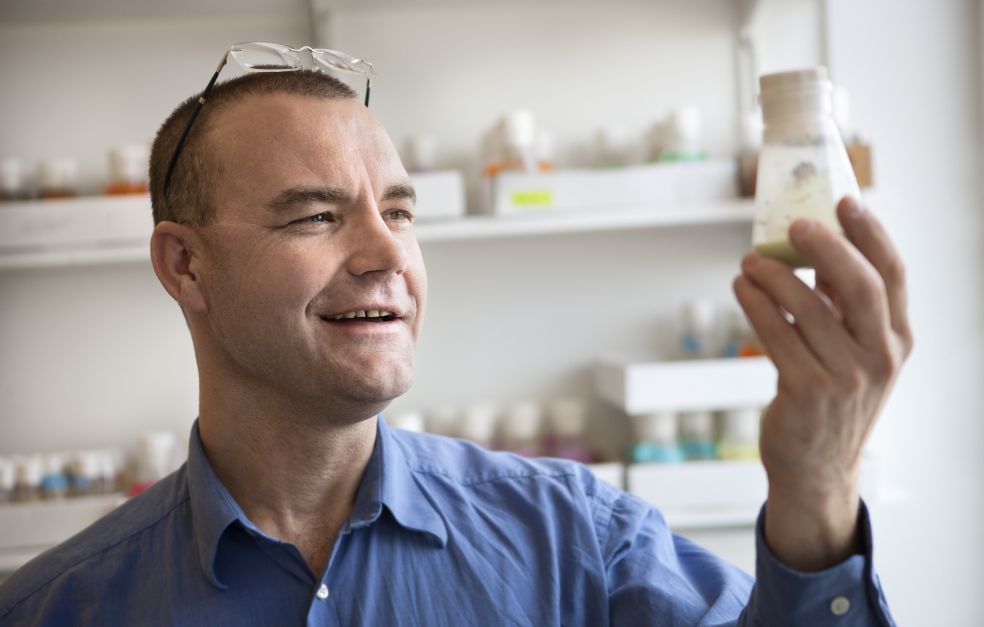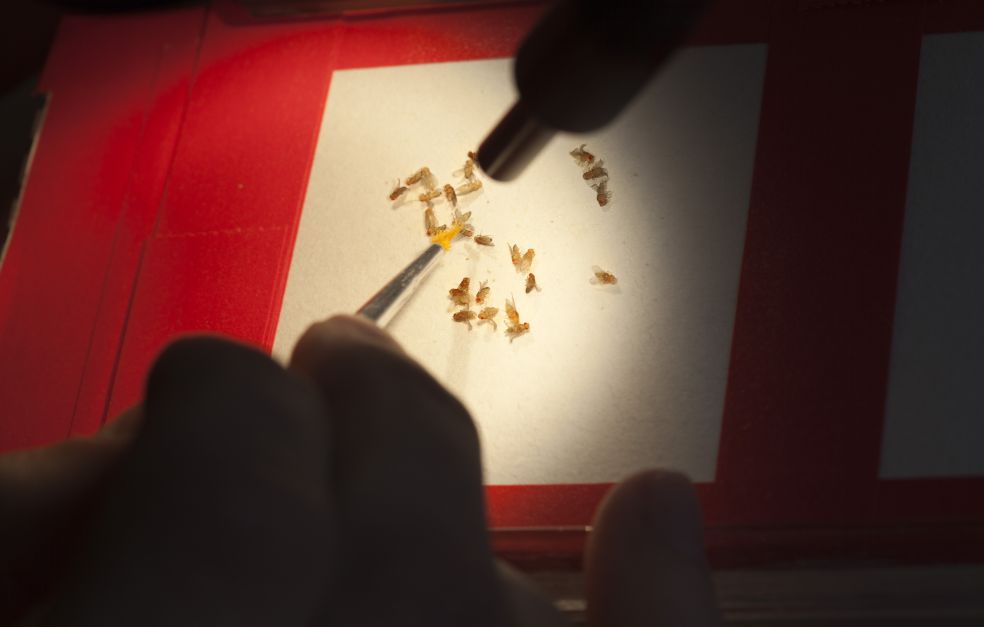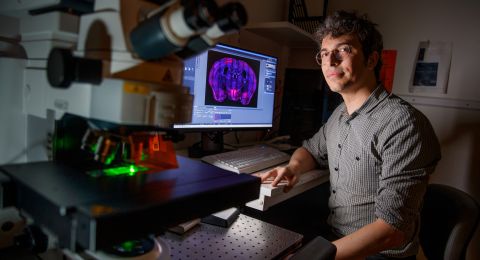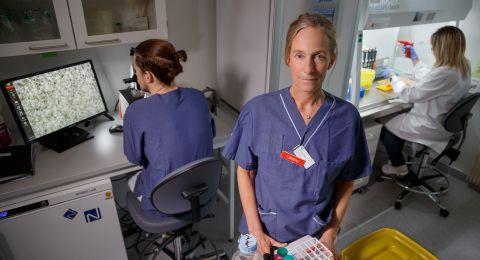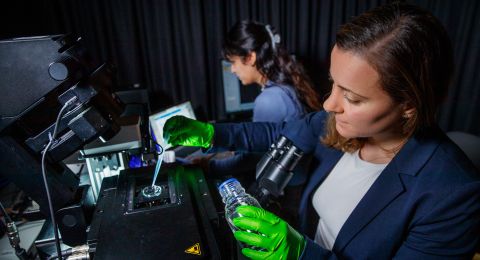
Project Grant 2012
Temporal Competence Changes in Neural Progenitor Cells
Principal investigator:
Stefan Thor, Professor of Developmental Biology
Co-investigators:
Karolinska Institutet
Johan Ericson
Jonas Muhr
Institution:
Linköping University
Grant in SEK:
SEK 47 million over five years
Developmental biologists Stefan Thor, Johan Ericson and Jonas Muhr want to understand how the nervous system develops in the embryo. They are particularly interested in how it comes about that stem cells can create so many kinds of neurons. They have succeeded in showing that there are time mechanisms that play a central role in stem cell differentiation. In other words, they know that stem cells have a built-in clock controlling cell production, and also the numbers of cells to be produced.
The project, which is being funded by the Knut and Alice Wallenberg Foundation, is pure basic scientific research, but its findings may ultimately lead to better understanding and pave the way for new drugs and therapies for diseases and conditions such as cancer, autism, schizophrenia and neurodegenerative diseases, including Alzheimer’s, ALS (also known as motor neurone disease) and Parkinson’s.
“This is a fairly new research field. But interest in the spatial factor dates much further back. The spatial factor refers to the location of the stem cell in the embryo when it decides to divide and create a nerve cell having a specific function. But this information alone is insufficient, it also depends on the time when the cell is created,” explains Thor, Professor of Developmental Biology at Linköping University.
Step by step
Stem cells in the nervous system usually divide asymmetrically, replicating themselves along with “buds” of daughter cells capable of differentiating into a nerve cell. A growing number of studies have now shown that stem cells change over time, and hive off nerve cells of different kinds at different points in time. But this process is not random; it follows a distinct timetable. Everything is controlled by an ingenious signaling system that is not yet fully understood. But our understanding of the process is gradually being pieced together.
“It’s a step-by-step process. The information is supplied in stages. First, the embryo gets to know what is up and down. Then the stem cells receive information about their exact location in the nervous system. For instance, if they are in the brain, they receive additional specific location information so they can create neurons for the tasks to be performed in that particular place.”
Then there are the time sequences, causing stem cells to change over time. The researchers in the project have shown that the time aspect is a central factor in the machinery.
“The two control systems – the spatial and the temporal – work in concert, which is essential in order for stem cells to be able to create so many different cells. They also govern how many cells are to be produced,” says Thor.
Genetic timetable
According to Thor, there is a kind of genetic timetable for the production of different cells.
“We already know about some genes that send signals saying that on ‘Mondays’, when the stem cell is in a certain place, a specific number of cells of a certain kind are to be produced, whereas on ‘Tuesdays’ a different number of a different model are required. It’s so fascinating that this is done with such precision.”
Not only must the right cell be produced at the right time; cells must also know exactly when they should stop dividing. If division continues, cell growth continues unchecked, and tumor cells that may develop into cancer are formed.
And that is just the problem – finding the “stop” button when trying to produce neurons in the laboratory, and treat diseases using stem cell therapy or regenerative medicine.
“Much of the research done has been based on spatial information. It has been possible to synthesize various cell types, but it has been difficult to stop cell division. This limits applications for humans, since there is then a great risk of tumor growth. This is why knowledge about the time aspects is so important in the context of regenerative medicine, for example.”
Unexpected links
Thor is using fruit flies and zebra fish as model systems to study nerve cell development.
“I started with zebra fish when we began this project. One advantage of using them is that their eggs are not inside the female, and their fry are transparent for a long time. This makes it fairly easy to study and manipulate their development.”
Ericson, who is a professor of developmental biology, and Muhr, who is a professor of eukaryotic molecular biology, both at Karolinska Institutet, are using mice and chicken (eggs) as model systems.
“This enables us to study mammals and egg-laying animals. The time windows for producing cells also differ enormously between a fruit fly and a mouse – from just under two hours to twenty-four.”
More and more research is suggesting that developmental biology lies at the heart of problems causing syndromes such as autism, schizophrenia and bipolarity.
“It’s probably not a question of complete mutations – rather small disruptions in neuron production. Perhaps all kinds of cell are present, but not in the right number? We had not expected to find clues to such diseases as early as the embryonic stage. It surprised us, actually.”
Text Carina Dahlberg
Translation Maxwell Arding
Photo Magnus Bergström
FACTS
Regenerative medicine is an umbrella term for methods of replacing damaged tissue in the body and its organs with new cells that have been grown in a laboratory environment.
Bodily organs are formed during fetal development from stem cells of various kinds, which are activated by chemical signals. These same signals can be used to persuade stem cells in the adult body to regenerate organs.
Nowadays the method is used in bone marrow transplants in patients with various forms of leukemia and anemia, and to replace burn-damaged skin. But there is good reason to believe that regenerative medicine will play a key role in the future in a number of other medical fields where there are no effective therapies at present. Examples of such diseases are neurodegenerative diseases such as Parkinson’s, and also diabetes, spinal cord injuries and heart attacks.

